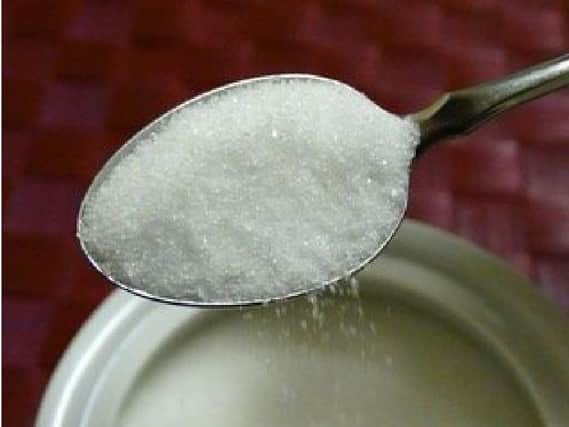Food Glorious Food: Sweet dreams without calories


It’s all systems go! The children are back to school (we hope they remain so), we have gone back to work, staying away from work, travelling to work or not travelling to work (so complicated) and life is looking a little more normal from behind our face masks. And I am on a mission.
On the whole I eat well, but these past months I have noticed an increase in my sweet tooth and the sugary products we have in the house. Reducing sugar and replacing sugar altogether has always been a popular conversation in my work, but it seems I need to apply this a little to myself.
Advertisement
Hide AdAdvertisement
Hide AdOne thing I get asked about frequently is the use of artificial sweeteners, so I am going to brush off the icing sugar from my notes and tell you a little about one of my favourites... stevia.
Like xylitol and erythritol, stevia is a natural sugar replacement. This product seems more readily available to us in different forms and is certainly sweeter than the others. It is found in sugar-free products, like chocolate bars, and also in sugar-like granules, syrups, drops and tablets.
But what is it? Stevia is derived from the leaves of the plant species stevia rebaudiana, which is native to Brazil and Paraguay. I have grown a stevia plant at home to see what the leaves actually taste like and they are incredibly sweet. In fact, they are thought to be between 250-300 times sweeter than normal sugar.
It’s free from calories and has no impact on spikes in sugar levels. It is thought to be anti-inflammatory and can help reduce blood pressure too.
Advertisement
Hide AdAdvertisement
Hide AdBut what are the disadvantages? If you try some of the granulated stevia on your tongue, it initially feels like sugar, but you do get a little ‘bitter’ aftertaste.
However, many stevia products are mixed with the natural sugar alcohol erythritol to help with his bitter flavour. As with any sweetener, don’t use in excessive quantities as side effects can occur. It can be expensive, but you will need much less.
It’s still possible to get great results when cooking with stevia, but it isn’t always as successful in baking as traditional sugar as it doesn’t caramelise in the same way.
It is recommended to use 1/2 tsp of stevia for every
2 tsps of sugar in a recipe (or check your packet’s recommendation). If making cookies, I have found crisp, shortbread-type biscuits to be more successful.
Advertisement
Hide AdAdvertisement
Hide AdIf you are making a cake, separate the eggs and whisk the egg whites to try to help get a better rise. Try to blend sugar and stevia together if you want to just start to reduce sugar and experiment with it.
Be warned, though, stevia isn’t always used in its pure form and can have added sugar, maltodextrin, dextrose and flavourings, so always check the ingredients and choose brands that only have the natural additions of sugar alcohol and stevia.
I am a firm believer that eating less sweet food is still better than using sugar replacements, but I am also a realist.
I have three children who are magnets to sweet stuff, and I can have a few days off the “eating well” wagon myself, so instead of abstaining altogether, I like to create a balance. Be mindful of your sugar intake, reduce in drinks in particular and find healthy, natural alternatives, but as with everything in life – consume with a smile and in moderation!
Stevia Cookies:
Advertisement
Hide AdAdvertisement
Hide AdBeat 6 tsp of granulated stevia with 220g olive oil spread.
Add 1 egg and 2 tsp vanilla extract and mix well.
Add 300g plain flour, 1 tsp baking powder and 75g of sugar free chocolate chips/chopped nuts/seeds/fried fruit.
Roll into 15 balls and squash down on a lined baking tray.
Bake at 190C for 20-25 minutes until golden.
Comment Guidelines
National World encourages reader discussion on our stories. User feedback, insights and back-and-forth exchanges add a rich layer of context to reporting. Please review our Community Guidelines before commenting.